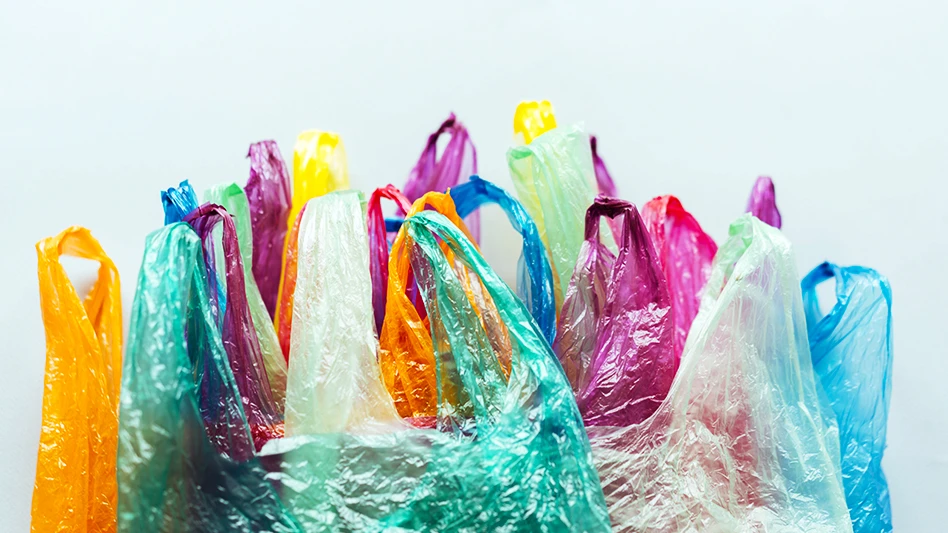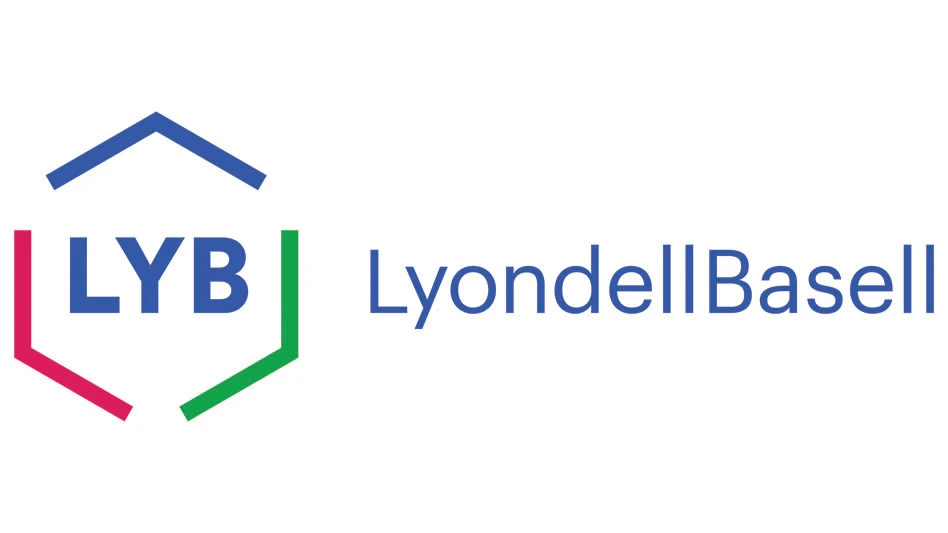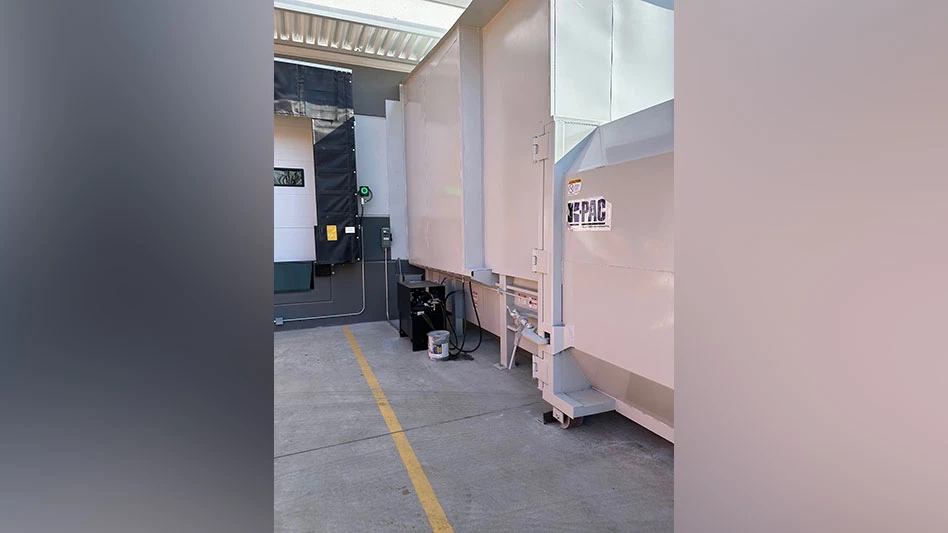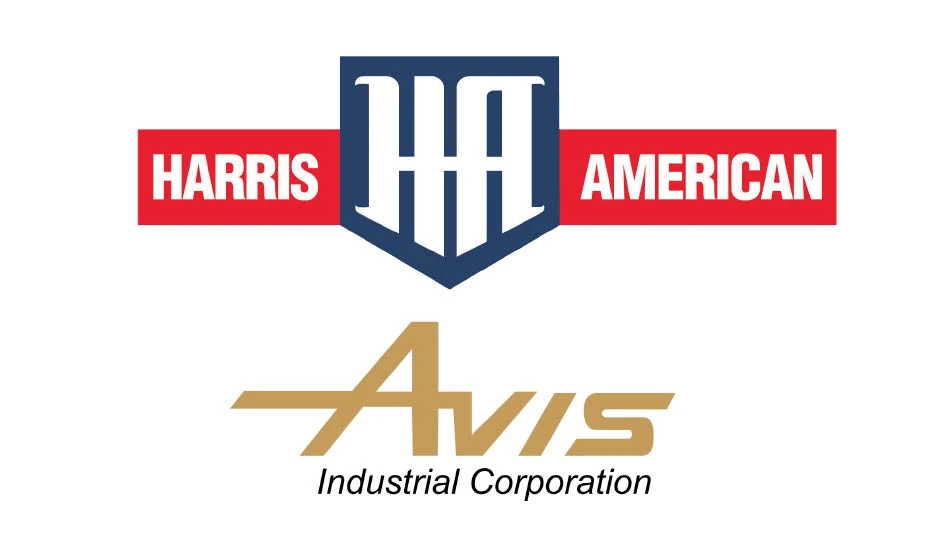
Ilona | stock.adobe.com
The Film Drop-Off Directory, a guide to public drop-off locations that accept plastic film for recycling, was removed from BagandFilmRecycling.org Nov. 17. The resource, managed and hosted by Sonoma, California-based Stina Inc., allowed consumers to enter their locations to find the nearest plastic film drop-off sites, often at retail stores. For more than 15 years, the guide has been a key resource for consumer-facing plastic bag recycling.
A message on the website’s homepage says Stina decided to remove the guide because of lack of funding, which historically came from the American Chemistry Council (ACC) and Plastics Industry Association, both based in Washington.
“For nearly a year, Stina has self-funded this free resource to help people recycle their household plastic film,” the message says. “We have made the difficult decision to turn off this resource because we are no longer able to secure sufficient support to continue to provide a vetted directory and respond to inquiries.”
Plastic film has been notoriously difficult to recycle and is not accepted in most curbside recycling programs. Plastic film products, known as “tanglers,” can get caught in disc screens at material recovery facilities (MRFs), slowing down operations and posing a danger to employees who must manually cut the tanglers out of the machines. Because of this, store drop-off has been the primary means of residential plastic film collection.
Stina previously ensured the directory’s accuracy based on lists provided by retail chains and reclaimers, crowdsourced input and feedback and spot-check phone calls to listed locations.
Nina Bellucci Butler, CEO of Stina, says the directory originally was intended to provide a closed-loop view of recycling, including drop-off locations, as well as a list of recyclers and products made from postconsumer recycled (PCR) plastic film. The lapse in funding and lack of engagement from stakeholders limited what the company could do with the resource and put the directory at risk of becoming outdated.
“Without more engagement, I felt like I was facilitating just the front part of [recycling] and not the full part of recycling,” Butler says. “It felt like greenwashing.”
RELATED: Trex modifies film recycling program
Trex, a Winchester, Virginia-based recycler and manufacturer of composite lumber products, has its own guide to store drop-off bins.
The now defunct Film Drop-Off Directory links NexTrex, the company’s plastic film collection program, as a viable alternative for consumers looking to recycle household plastic film. NexTrex features a list of drop-off locations at multiple retail chains, organized by state. Trex purchases returned consumer bags from retailers, recycling the material into composite decking, railings and other outdoor items. Materials accepted at Trex drop-off bins include grocery bags, stretch film, produce bags, air pillows and bubble wrap. Trex does not accept frozen food bags, candy wrappers, chip bags or mesh produce bags through the program.
Disconnect in drop-off
The Film Drop-Off Directory might have helped capture residential plastic film, but it could not guarantee viable end markets for these materials. In an ABC News investigation in May, reporters glued trackers into 46 bundles of plastic bags before depositing them at various Target and Walmart drop-off locations. The investigation found half the trackers last pinged at landfills or trash incinerators, seven stopped pinging at transfer stations that did not process plastic film, and six had not pinged since their initial drop off. The report also found a handful of trackers last pinged in Indonesia and Malaysia.
Bloomberg Green published a similar investigation in September. Reporters placed trackers in 30 bundles of plastic packaging marked with store drop-off labels and deposited the materials at stores in nine states and in Washington. The report found 13 trackers—more than 40 percent—ended up at landfills.
“It’s not wrong to say that certain film packages are recyclable,” Butler says. “My concern is that it’s a distraction from really making the investment, not just financially but a real, cohesive harmonized effort, to do what we had proposed long ago. It really hit me that we’re not focusing on really moving the needle. It’s more about feeling like it could be recycled than it actually getting recycled.”
Sponsored Content
Redefining Wire Processing Standards
In nonferrous wire and cable processing, SWEED balances proven performance with ongoing innovation. From standard systems to tailored solutions, we focus on efficient recovery and practical design. By continually refining our equipment and introducing new technology, we quietly shape the industry—one advancement at a time.
Sponsored Content
Redefining Wire Processing Standards
In nonferrous wire and cable processing, SWEED balances proven performance with ongoing innovation. From standard systems to tailored solutions, we focus on efficient recovery and practical design. By continually refining our equipment and introducing new technology, we quietly shape the industry—one advancement at a time.
Sponsored Content
Redefining Wire Processing Standards
In nonferrous wire and cable processing, SWEED balances proven performance with ongoing innovation. From standard systems to tailored solutions, we focus on efficient recovery and practical design. By continually refining our equipment and introducing new technology, we quietly shape the industry—one advancement at a time.
Sponsored Content
Redefining Wire Processing Standards
In nonferrous wire and cable processing, SWEED balances proven performance with ongoing innovation. From standard systems to tailored solutions, we focus on efficient recovery and practical design. By continually refining our equipment and introducing new technology, we quietly shape the industry—one advancement at a time.
Sponsored Content
Redefining Wire Processing Standards
In nonferrous wire and cable processing, SWEED balances proven performance with ongoing innovation. From standard systems to tailored solutions, we focus on efficient recovery and practical design. By continually refining our equipment and introducing new technology, we quietly shape the industry—one advancement at a time.
Butler says if adequate funding had been available, Stina would have kept the directory online because it could have ensured the most accurate information while also verifying end markets.
Historically, How2Recycle, a labeling system developed by the Sustainable Packaging Coalition, a project of Charlottesville, Virginia-based GreenBlue, directed consumers to the Film Drop-Off Directory. The labeling initiative now links consumers to a drop-off directory hosted by Earth911.
“Meaningful engagement, collaboration and commitment across the film value chain is required for progress in film recycling,” the drop-off directory website reads. “Recyclers face many challenges with our current economic system, and we need to support recyclers by recycling right and buying products made with recycled content.”
Get curated news on YOUR industry.
Enter your email to receive our newsletters.
Latest from Recycling Today
- Enfinite forms Hazardous & Specialty Waste Management Council
- Combined DRS, EPR legislation introduced in Rhode Island
- Eureka Recycling starts up newly upgraded MRF
- Reconomy Close the Gap campaign highlights need for circularity
- Nickel carbonate added to Aqua Metals’ portfolio
- EuRIC, FEAD say End-Of-Life Vehicle Regulation presents opportunity for recyclers
- Recyclers likely to feel effects of US-China trade war
- BCMRC 2025 session preview: Navigating battery recycling legislation and regulations






